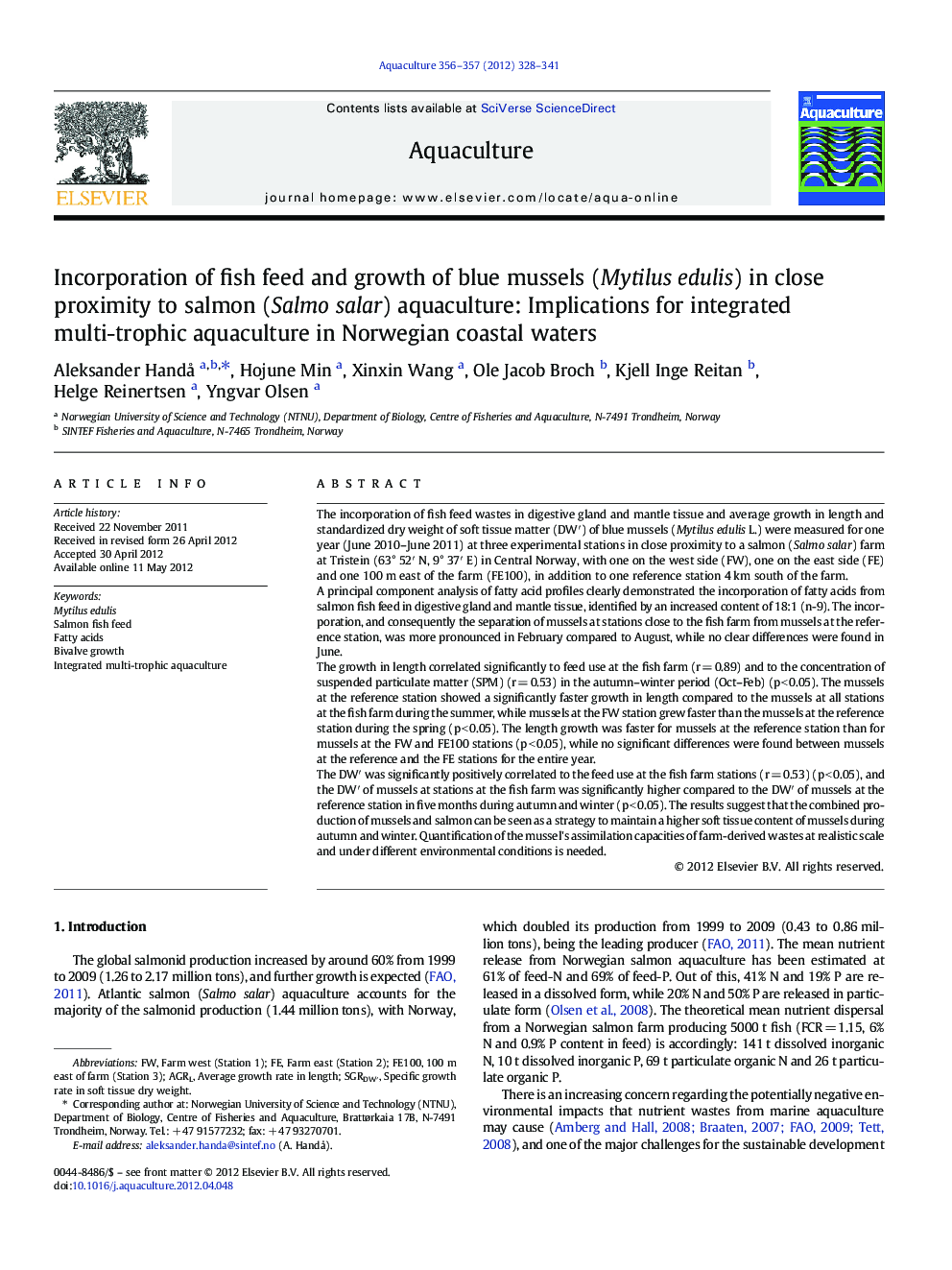| Article ID | Journal | Published Year | Pages | File Type |
|---|---|---|---|---|
| 2422581 | Aquaculture | 2012 | 14 Pages |
The incorporation of fish feed wastes in digestive gland and mantle tissue and average growth in length and standardized dry weight of soft tissue matter (DW′) of blue mussels (Mytilus edulis L.) were measured for one year (June 2010–June 2011) at three experimental stations in close proximity to a salmon (Salmo salar) farm at Tristein (63° 52′ N, 9° 37′ E) in Central Norway, with one on the west side (FW), one on the east side (FE) and one 100 m east of the farm (FE100), in addition to one reference station 4 km south of the farm.A principal component analysis of fatty acid profiles clearly demonstrated the incorporation of fatty acids from salmon fish feed in digestive gland and mantle tissue, identified by an increased content of 18:1 (n-9). The incorporation, and consequently the separation of mussels at stations close to the fish farm from mussels at the reference station, was more pronounced in February compared to August, while no clear differences were found in June.The growth in length correlated significantly to feed use at the fish farm (r = 0.89) and to the concentration of suspended particulate matter (SPM) (r = 0.53) in the autumn–winter period (Oct–Feb) (p < 0.05). The mussels at the reference station showed a significantly faster growth in length compared to the mussels at all stations at the fish farm during the summer, while mussels at the FW station grew faster than the mussels at the reference station during the spring (p < 0.05). The length growth was faster for mussels at the reference station than for mussels at the FW and FE100 stations (p < 0.05), while no significant differences were found between mussels at the reference and the FE stations for the entire year.The DW′ was significantly positively correlated to the feed use at the fish farm stations (r = 0.53) (p < 0.05), and the DW′ of mussels at stations at the fish farm was significantly higher compared to the DW′ of mussels at the reference station in five months during autumn and winter (p < 0.05). The results suggest that the combined production of mussels and salmon can be seen as a strategy to maintain a higher soft tissue content of mussels during autumn and winter. Quantification of the mussel's assimilation capacities of farm-derived wastes at realistic scale and under different environmental conditions is needed.
► A one-year study of integrated salmon-mussel production in Norway. ► Incorporation of salmon fish feed identified by an increased content of 18:1n-9. ► More pronounced incorporation of 18:1n-9 in February compared to June and August. ► Higher dry weight of mussels at the fish farm in autumn and winter. ► Equal length growth for the fastest growing mussels at the farm and control mussels.
